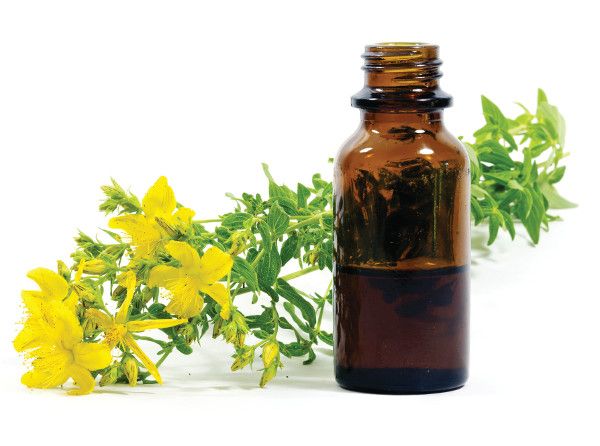FTC Clamps Down on Homeopathic Products
A new FTC enforcement policy means homeopathic products may be harder to market going forward.
Maren Winter/shutterstock.com

Homeopathy is a system of alternative medicine created in 1796 in Germany. The system is based on the principle that “like cures like,” meaning that a substance that causes the symptoms of a disease in healthy people can also be used to cure similar symptoms in sick people. In fact, the word homeopathy comes from the Greek words for “like” and “suffering.”
The homeopathic product industry has been historically under-regulated, and the existing rules surrounding homeopathy are often confusing and arcane. There are also very few homeopathic-related enforcement actions from which industry members can glean guidance. Most recently, on September 30, 2016, FDA issued a press release advising consumers to discontinue using homeopathic teething tablets and gels. FDA stated that it “was not aware of any proven health benefit of the products, which are labeled to relieve teething symptoms in children.” As far as regulatory enforcement goes, this FDA warning represents a brief shower in an otherwise lengthy drought for homeopathic products.
The FTC is the other federal agency that shares jurisdiction over homeopathic products. This past November, the FTC released one piece of new guidance on homeopathic products, called Enforcement Policy Statement on Marketing Claims for OTC Homeopathic Drugs.
Given the relatively quiet regulatory environment for homeopathic products, why did the FTC feel the need to flex its regulatory muscle at this time?
Unproven History
First, let’s take a look at how the homeopathic product industry has grown. The creator of modern homeopathy, Samuel Hahnemann, began experimenting with the effects of cinchona bark on malaria as far back as 1790. From there, he expanded his tests to see what health effects various substances produced in humans-a procedure known as “homeopathic proving.” Because Hahnemann believed that large doses of drugs would only aggravate an illness, he devised a technique for making dilutions that would preserve a substance’s therapeutic properties while removing its harmful effects. These “provings” were published in 1810, and subsequent editions are still used by homeopaths today.
Homeopathy was introduced in the United States in 1825 and flourished throughout the 19th century, in part because traditional medical practice of the time relied on ineffective and often dangerous treatments. Despite its popularity, the practice faced criticism by mainstream scientists, who often characterized it as useless and unscientific. As criticism mounted and modern medical advances were made, homeopathy’s popularity declined almost as quickly as it rose.
However, in the late 1970s, it made a significant resurgence, and by 2007, sales of over-the-counter (OTC) homeopathic medicines had risen to $2.7 billion, making it the extremely lucrative business it remains today.
Leaping through Loopholes
The Federal Food, Drug, and Cosmetic Act (FDCA) was passed in 1938, at the height of homeopathy’s popularity. The law was sponsored by Royal Copeland, a senator from New York and a homeopathic physician. Strengthened by Senator Copeland’s zealous advocacy, homeopathic preparations were eventually classified as drugs in the FDCA. Thus, homeopathic products are considered drugs today as long as they are included in the Homeopathic Pharmacopeia of the United States (HPUS), which the FDCA recognizes as an official drug compendium.
Although FDA regulates homeopathic remedies, homeopathic products are subject to numerous regulatory exemptions and loopholes that do not apply to traditional OTC drugs; for instance, these products are not required to bear expiration dates or undergo finished-product testing for identity and strength. Indeed, FDA’s own guidance on marketing homeopathic products is limited to one short compliance policy guideline, which does little more than reiterate that these products must bear labels with basic information, such as a statement of identity and net quantity of contents, and that they must be manufactured according to the HPUS.
Given the resurgence in popularity of such a controversial product category, one might have expected to see increased enforcement around homeopathic products. However, FDA enforcement has been largely limited to a handful of warning letters aimed at unscrupulous marketers selling products intended to treat conditions not included in the HPUS, such as AIDS or the West Nile virus. Although FDA held a public hearing and solicited comments on the marketing of homeopathic products in April 2015, it has yet to issue findings, guidance, or new regulations based on those meetings.
Enter the FTC. Like the FDA, FTC enforcement against companies marketing homeopathic medicines has been exceedingly rare; however, in September 2015, the agency followed in the FDA’s footsteps, holding a public workshop to explore advertising of OTC homeopathic drugs and to obtain information that would assist the agency in determining how to apply its legal authority to the advertising and marketing of OTC homeopathic drugs. I attended this workshop, as did members of industry, the legal community, and those simply curious about what might be said about this controversial topic. The workshop featured three panels made up of 18 stakeholders, including medical professionals, industry representatives, consumer advocates, private-practice attorneys, and government regulators. The FTC also solicited comments from the public before and after the workshop.
Based on what I observed, it was very clear that a number of the stakeholders were fervent supporters of homeopathy, while other panelists thought the entire practice was a bunch of malarkey. What was not clear was which side of the divide future FTC policies and enforcement would fall. The agency emphatically answered that question in November 2016.
Old Rules, New Guidance
On November 15, 2016, the FTC published two documents concerning the marketing and advertising of homeopathic products that substantially affect the way marketers can now make product-benefit claims.
First, the FTC published a staff report summarizing the learnings gathered from the September 2015 FTC workshop and describing issues raised by public comments and consumer research commissioned by the FTC. At the end of the staff report, the agency concluded, “No convincing reasons have been advanced either in the comments or the workshop as to why efficacy and safety claims for OTC homeopathic drugs should not be held to the same truth-in-advertising standards as other products claiming health benefits.”
If this staff report was a metaphoric spark of enforcement lightening on a dark and stormy night, the second document that the FTC published, an enforcement policy statement, is the crack of thunder that quickly follows. In the enforcement policy statement, the FTC made its position on homeopathic products crystal clear: “For the vast majority of OTC homeopathic drugs, the case for efficacy is based solely on traditional homeopathic theories, and there are no valid studies using current scientific methods showing the product’s efficacy. Accordingly, marketing claims that such homeopathic products have a therapeutic effect lack a reasonable basis and are likely misleading in violation of Sections 5 and 12 of the FTC Act.”
The FTC said it will allow homeopathic products manufactured in compliance with FDA regulations to be marketed as long as they bear two disclaimers:
- “There is no scientific evidence that the product works.”
- “The product’s claims are based only on theories of homeopathy from the 1700s that are not accepted by most modern medical experts.”
Furthermore, the agency noted:
- Any disclosure should stand out and be in close proximity to messages about the product’s efficacy. The agency even went as far as to say that in order to be effective, a disclosure may actually need to be incorporated in the efficacy message itself.
- Marketers should not undercut such qualifications with additional positive statements or consumer endorsements reinforcing a product’s efficacy.
- The FTC will carefully scrutinize the net impression of OTC homeopathic advertising or other marketing employing disclosures to ensure that advertising and marketing adequately convey the extremely limited nature of the health claim being asserted. If, despite a marketer’s disclosures, the FTC determines that marketing claims are not adequately substantiated, the marketer will be in violation of the FTC Act.
Practically, this guidance leaves the homeopathic industry in a challenging position. The FTC acknowledged as much, noting that there is an “inherent contradiction in asserting that a product is effective and also disclosing that there is no scientific evidence for such an assertion.”
While homeopathic industry members may be disappointed to find that they can no longer simply rely on HPUS and historical provings to substantiate their claims, the FTC’s enforcement policy statement brings necessary clarity to the issue by linking these products to existing tenets of advertising law, such as the principle that health, safety, or efficacy claims should be supported by competent and reliable scientific evidence.
Marketers of homeopathic products, or products containing homeopathic ingredients, should be on high alert, reviewing their claims and substantiation and making the necessary revisions to meet the standards set out by the FTC. It is unlikely that the storm is over yet, and no one wants to get caught in a regulatory downpour.
La Toya Sutton is an attorney in the advertising, marketing, and media practice of Manatt, Phelps & Phillips, based in the firm’s Washington, DC, office. She counsels clients on the marketing and promotion of products subject to the overlapping jurisdictions of the FDA and FTC, such as foods, dietary supplements, cosmetics, drugs, and medical devices. Ms. Sutton can be reached at 202/585-6575 or at lsutton@manatt.com.
Also read:
How Do FDA and FTC Regulate Ayurveda Products?

Prinova acquires Aplinova to further increase its footprint in Latin America
April 7th 2025Prinova has recently announced the acquisition of Brazilian ingredients distributor Aplinova, which is a provider of specialty ingredients for a range of market segments that include food, beverage, supplements, and personal care.

























